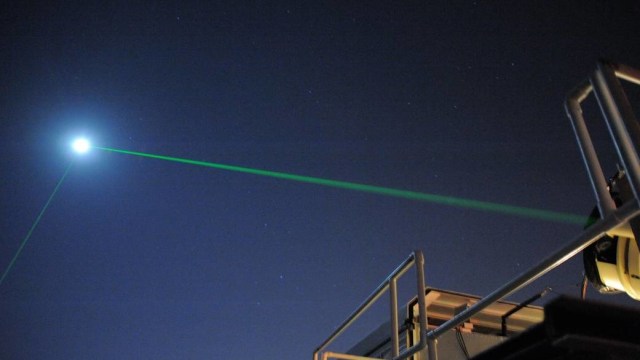Ask Ethan: Will The Cosmic Microwave Background Ever Disappear?
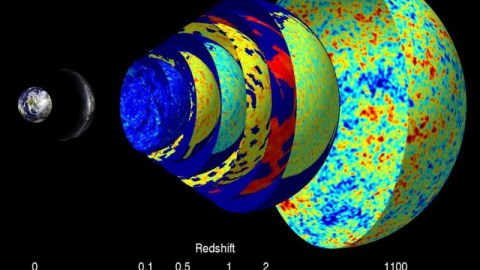
As the Universe ages, will it eventually fade away entirely?
The earliest signal we’ve ever directly detected from the Universe comes to us from shortly after the Big Bang: when the Universe was merely 380,000 years old. Known today as the Cosmic Microwave Background, it’s alternatively been called the “primeval fireball” or the Big Bang’s leftover glow. It was an astonishing prediction dating back to George Gamow all the way in the 1940s, and it shocked the astronomical world when it was directly detected back in the 1960s. Over the past 55 years, we’ve measured its properties exquisitely, learning a tremendous amount about our Universe in the process. But will it always be around? That’s what Jürgen Sörgel wants to know, asking:
“The cosmic microwave background (CMB) was generated 380.000 years after the big bang, when the universe became transparent. The photons we will measure next week were generated a little bit further away from the position we had at that time compared to the photons we measure today. Our future is infinite, but the universe at year 380.000 was finite. Does that mean that the day will come when [the] CMB will disappear?”
It’s a simple question with a complex answer. Let’s dive in to what we know.
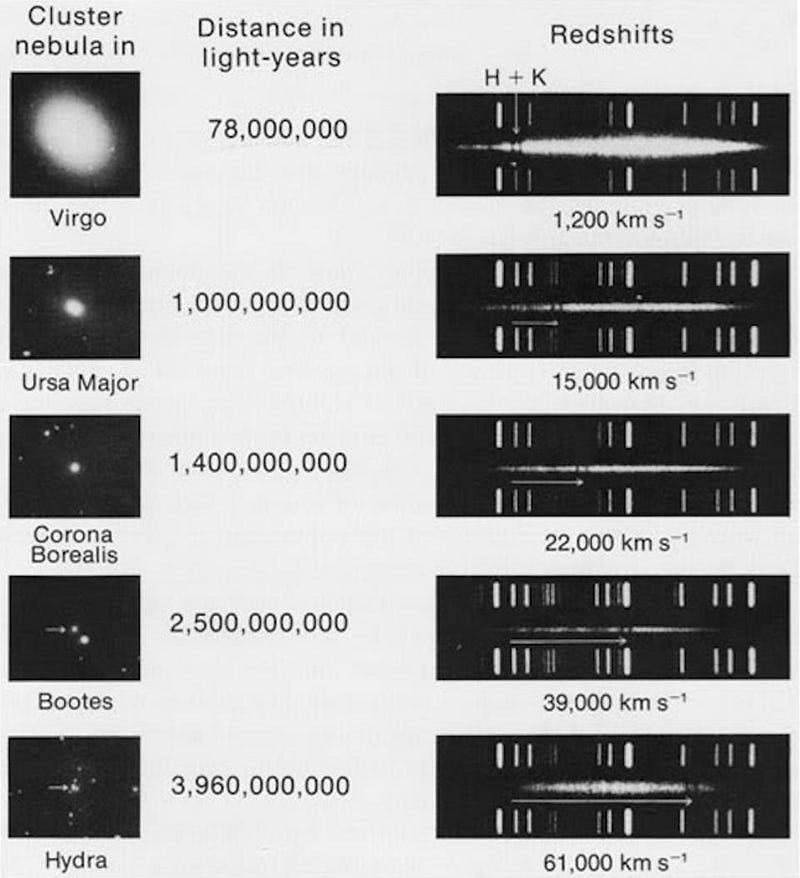
If we turn to the theoretical side, we can understand where the Cosmic Microwave Background comes from. The farther away a galaxy is from us today, the faster it appears to be speeding away from us. The way we observe this is the same way that scientists like Vesto Slipher observed it more than 100 years ago:
- we measure the light coming from a distant object,
- we break it up into its individual wavelengths,
- we identify sets of emission or absorption lines that correspond to specific atoms, ions, or molecules,
- and measure that they’re all systematically shifted, by the same percentage, towards either shorter (bluer) or longer (redder) wavelengths.
Although there’s a bit of randomness to each individual galaxy’s motion — up to a few thousand kilometers-per-second, corresponding to the gravitational tugs on each galaxy by the surrounding matter — there’s a general, unambiguous trend that emerges. The farther away a galaxy is, the greater the amount its light is shifted towards longer wavelengths. This was first observed way back in the 1910s, and was some of the first evidence in support of the expanding Universe.
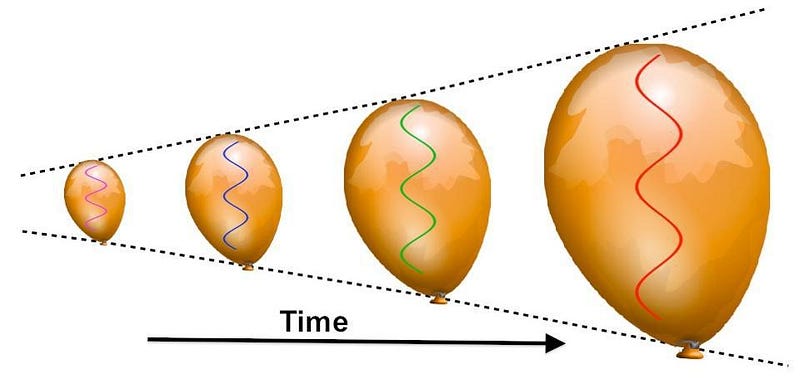
Although many scientists took advantage of this observation, the first one to put this piece together into the framework we recognize as the modern Big Bang was George Gamow. In the 1940s, Gamow realized that a Universe that was expanding today — where the distance between any two points is increasing — must have been not only smaller in the past, but also hotter and denser. The reason is simple, but no one else had put the pieces together until Gamow.
A photon, or quantum of light, is defined by its wavelength. The energy of an individual photon is inversely proportional to its wavelength: a long-wavelength photon has less energy than a short-wavelength photon. If you have a photon traveling through your Universe and the Universe is expanding, then the space that the photon is passing through is stretching, meaning the photon itself gets stretched to longer wavelengths and lower energies. In the past, therefore, these photons must have had shorter wavelengths and higher energies, and higher energies mean hotter temperatures and a more energetic Universe.
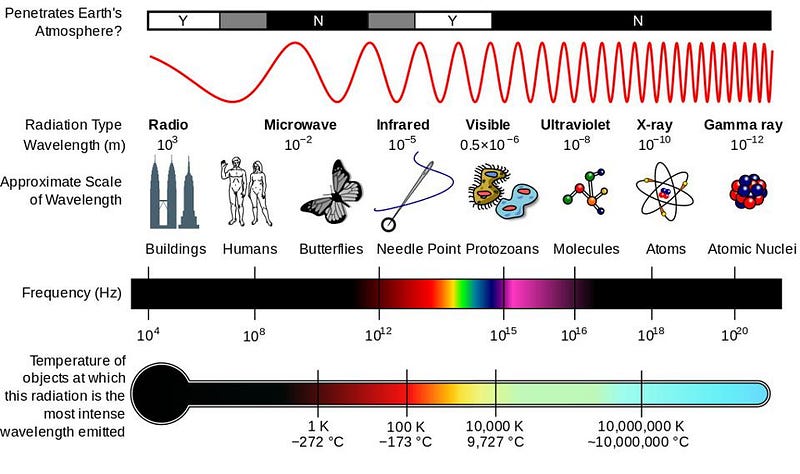
Gamow, in a leap of faith, extrapolated this as far back as he could fathom. At some point in his extrapolation, he realized that the photons that exist in the Universe would have been heated up to such a high temperature that one of them, on occasion, would have enough energy to ionize hydrogen atoms: the most common type of atom in the Universe. When a photon strikes an atom, it interacts with the electron, either knocking it up to a higher energy level or — if it has sufficient energy — kicking the electron free of the atom entirely, ionizing it.
In other words, there must have been a time in the Universe’s past where there were enough high-energy photons compared to both:
- the amount of energy required to ionize an atom,
- and the number of atoms that exist,
so that every atom was ionized. As the Universe expanded and cooled, however, electrons and ions continue to find each other and re-form atoms, and eventually there weren’t enough photons of sufficient energy to keep ionizing them. At that point, the atoms become electrically neutral, the photons no longer bounce off of the free electrons, and the light that makes up the Cosmic Microwave Background simply travels freely through the Universe, which continues to expand.
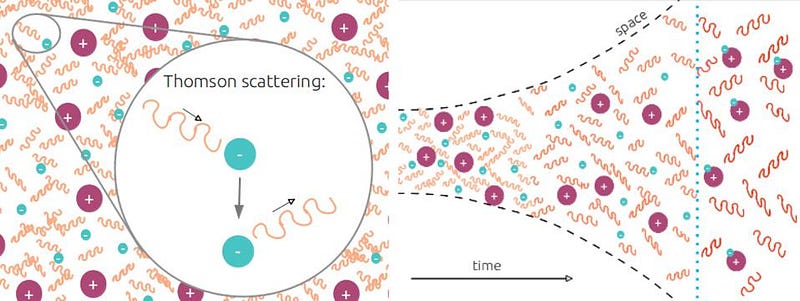
When we fast-forward to today, 13.8 billion years later, we can actually detect these leftover photons. When these neutral atoms formed, the Universe was less than one-billionth its present volume, and the temperature of this background radiation was right around 3,000 K: typical for the surface temperature of a red giant star. After billions of years of cosmic expansion, the temperature of this radiation is now a mere 2.725 K: less than three degrees above absolute zero.
And still, we’re able to detect it. There are 411 photons left over from the Big Bang permeating every cubic centimeter of space today. The photons we’re detecting today were emitted just 380,000 years after the Big Bang, journeyed through the Universe for 13.8 billion years, and are finally arriving at our telescopes right now. Tomorrow’s CMB might appear mostly identical to today’s, but it’s photons are one light-day behind.
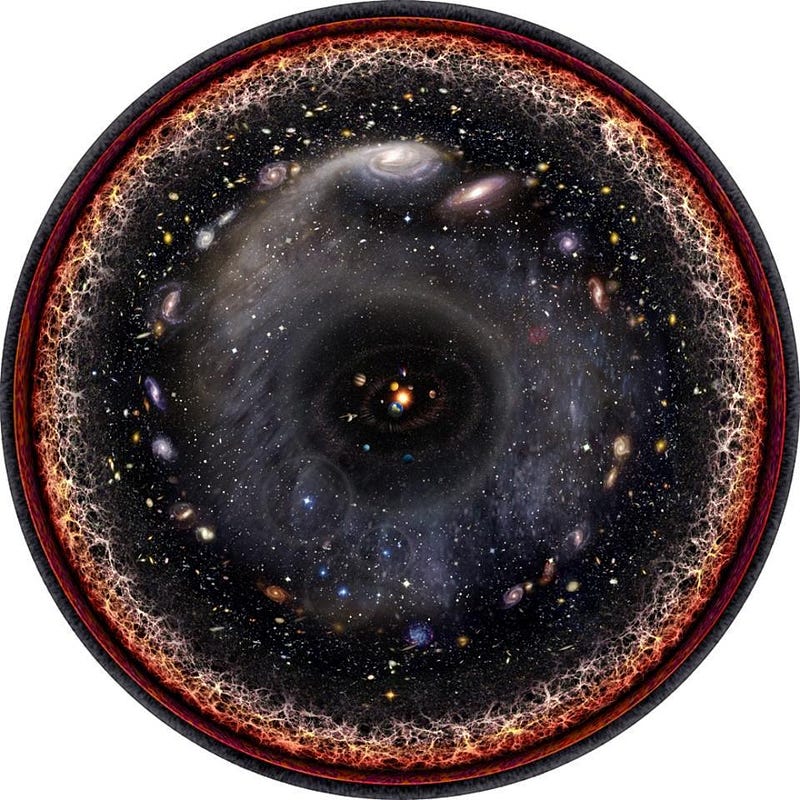
This doesn’t mean that the CMB we’re seeing today is going to wash over us and then disappear! What it means, instead, is that the CMB we see today was emitted 13.8 billion years ago when that portion of the Universe reached 380,000 years of age. The CMB we’ll see tomorrow will have been emitted 13.8 billion years plus one day ago, when that portion of the Universe reached 380,000 years of age. The light that we see is the light that is arriving after journeying through the Universe since it was first emitted, but there’s a key realization that needs to go along with that.
The Big Bang — if we could somehow step outside our Universe and watch it occur — is an event that occurred everywhere throughout our Universe at once. It occurred here, where we are, at the same instant it occurred 46 billion light-years away in all directions, as well as everywhere in between. When we look out at the great cosmic expanse, we’re looking farther and farther back in time. No matter how far away we look or how much the Universe expands, there will always be a “surface” we can see, in all directions, where the Universe is only just now reaching 380,000 years of age.
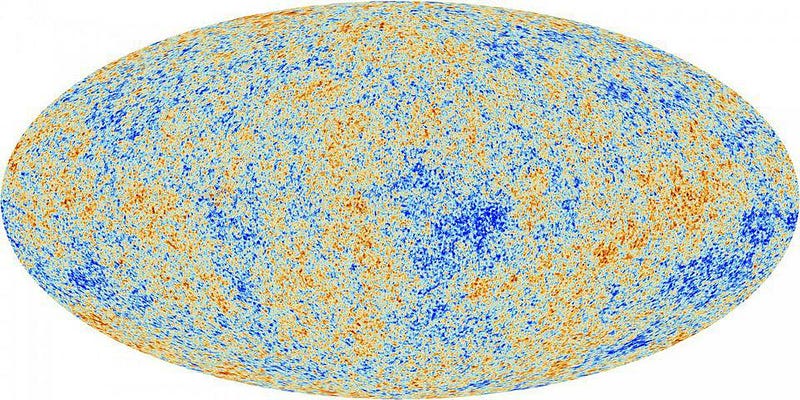
In other words, the Universe will never run out of photons for us to see. There will always be a faraway place, from our perspective, where the Universe is first forming stable, neutral atoms. At that location, the Universe becomes transparent to the ~3000 K photons that were previously scattering off of the ions (mostly in the form of free electrons) that were omnipresent, enabling them to simply stream freely in all directions. What we observe as the Cosmic Microwave Background are the photons emitted from that location that happened to be traveling in our direction at that moment.
After journeying through the Universe for 13.8 billion years, they’re at last arriving at our eyes. If we fast forward far into the future, those components of the story will still be the same, but a few important aspects will change in vital ways. As more time passes, the Universe will continue to expand, meaning that:
- the photons get stretched to longer wavelengths,
- meaning that the CMB will be cooler,
- there will be a lower density of photons,
- and the specific pattern of fluctuations that we see will slowly begin to change over time.

What we see as the CMB, today, consists of hot spots and cold spots that correspond to regions of space that are slightly less dense or more dense than the cosmic average, albeit by a tiny, minuscule amount: about 1 part in 30,000. Those overdense and underdense regions have a finite, specific size to them, and eventually those regions will be in front of the CMB, rather than the point-of-origin of the CMB we see. If we wait for long enough — and long enough is at least hundreds of millions of years from where we presently sit — we’ll see an entirely foreign CMB.
But it won’t go away entirely. At some point, a hypothetical observer that’s still around will need to use radio waves to detect the Big Bang’s leftover glow, as the radiation will stretch so severely it will redshift out of the microwave portion of the spectrum and into the radio. We’ll have to build even more sensitive radio dishes, as the number density of photons will drop from hundreds per cubic centimeter to less than 1 per cubic meter. We’ll need larger dishes to detect these long-wavelength photons and gather enough light to identify this ancient signal.
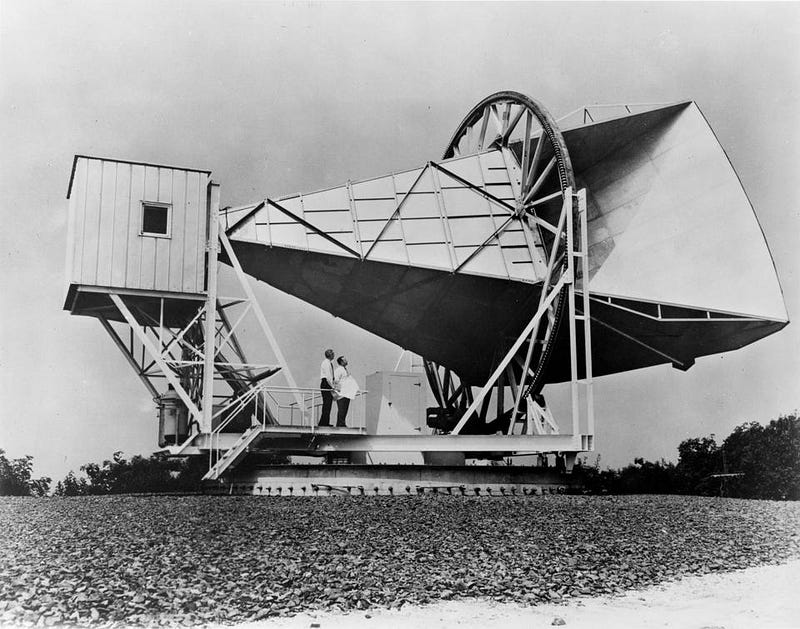
However, the Big Bang’s leftover glow will never disappear entirely. No matter how far we extrapolate into the future, even as the density of photons and the energy-per-photon both continue to drop, a large enough, sensitive enough detector tuned to the right wavelength could always identify it.
At some point, of course, this becomes wildly impractical. When the wavelength of a leftover photon from the Big Bang becomes larger than a planet, or the spatial density of photons becomes lower than 1-per-solar system, it seems implausible that we’d ever build a detector capable of measuring it. On long enough cosmic timescales, the number density of particles — both matter particles and photons — as well as the energy per photon we’d observe, both asymptote towards zero.
But the rate at which it goes to zero is slow enough that, so long as we’re talking about a finite amount of time after the Big Bang, even if it’s an arbitrarily long time, we’ll always be able to design, at least in theory, a sufficiently large detector to reveal our cosmic origins.

The biggest existential puzzle about all of it, however, is this: if creatures like us came into existence hundreds of billions of years (or more) from now, how would they ever know to look for this leftover glow from a Big Bang? The only reason we even thought to look for it is because we had evidence, everywhere we looked, for an expanding Universe. But in the very distant future, this won’t be the case at all! Dark energy is presently driving the Universe apart, and while the Milky Way, Andromeda, and the rest of the Local Group will remain bound together, every galaxy, galaxy group, and galaxy cluster beyond ~3 million light-years away will be pushed away by the Universe’s expansion.
100 billion years from now, the nearest galaxy will be unobservably distant; no optical or even infrared telescope in existence today would be able to see a single galaxy beyond our own. Without that clue to guide a civilization, how would they ever know to search for an ultra-faint, leftover glow? How would they ever surmise that our Universe arose from a hot, dense, uniform, rapidly expanding past? It may be the case that the only reason we determined our cosmic origins is because we came into existence so early in the Universe’s history. The signals will change and become harder to detect, sure, but even though they won’t quite disappear, future civilizations won’t have the same clues that we do. In a way, we really are the cosmically fortunate ones.
Send in your Ask Ethan questions to startswithabang at gmail dot com!
Ethan Siegel is the author of Beyond the Galaxy and Treknology. You can pre-order his third book, currently in development: the Encyclopaedia Cosmologica.




